Greenhouse fertigation

Fertigation is the process of applying fertilizer and water to plants through an irrigation system. It is a precise and efficient way to deliver nutrients to plants, and it can help to improve crop yield and quality. Let's explore the power of fertigation in maximizing plant potential within controlled environments while conquering nutrient challenges.
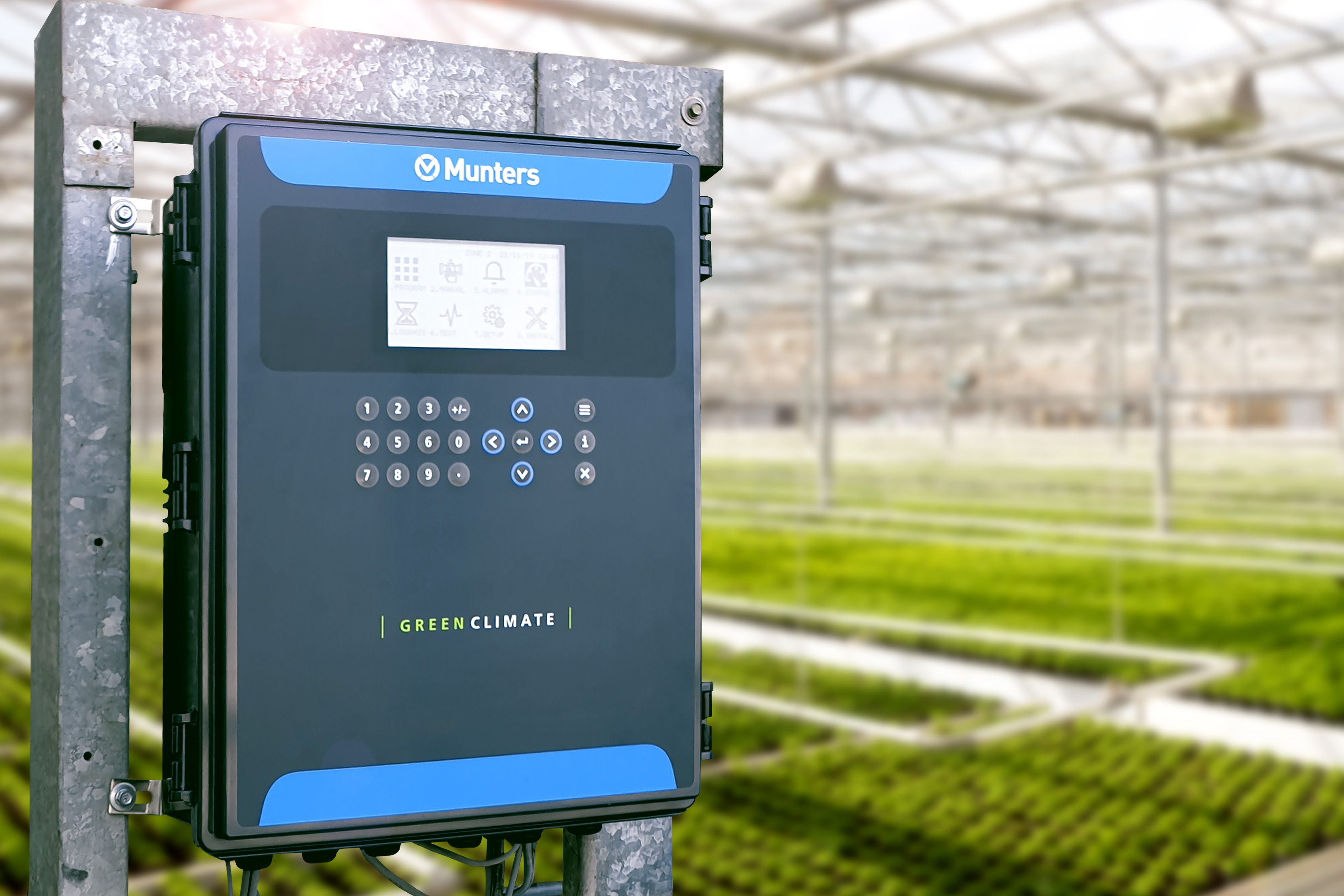
Precise and efficient nutrient controller for your greenhouse
Rely on the Munters Green Climate Controller for automation and control of your fertigation systems. It can set and maintain specific fertilizer concentrations and irrigation schedules, ensuring your plants always receive the nutrients they need, when they need them.
The controller also uses sensors to monitor greenhouse temperature, humidity, and soil moisture levels. The control system can adjust the fertigation schedule using sensor data. For instance, if the soil moisture level is too high, the controller automatically reduces the amount of water used.
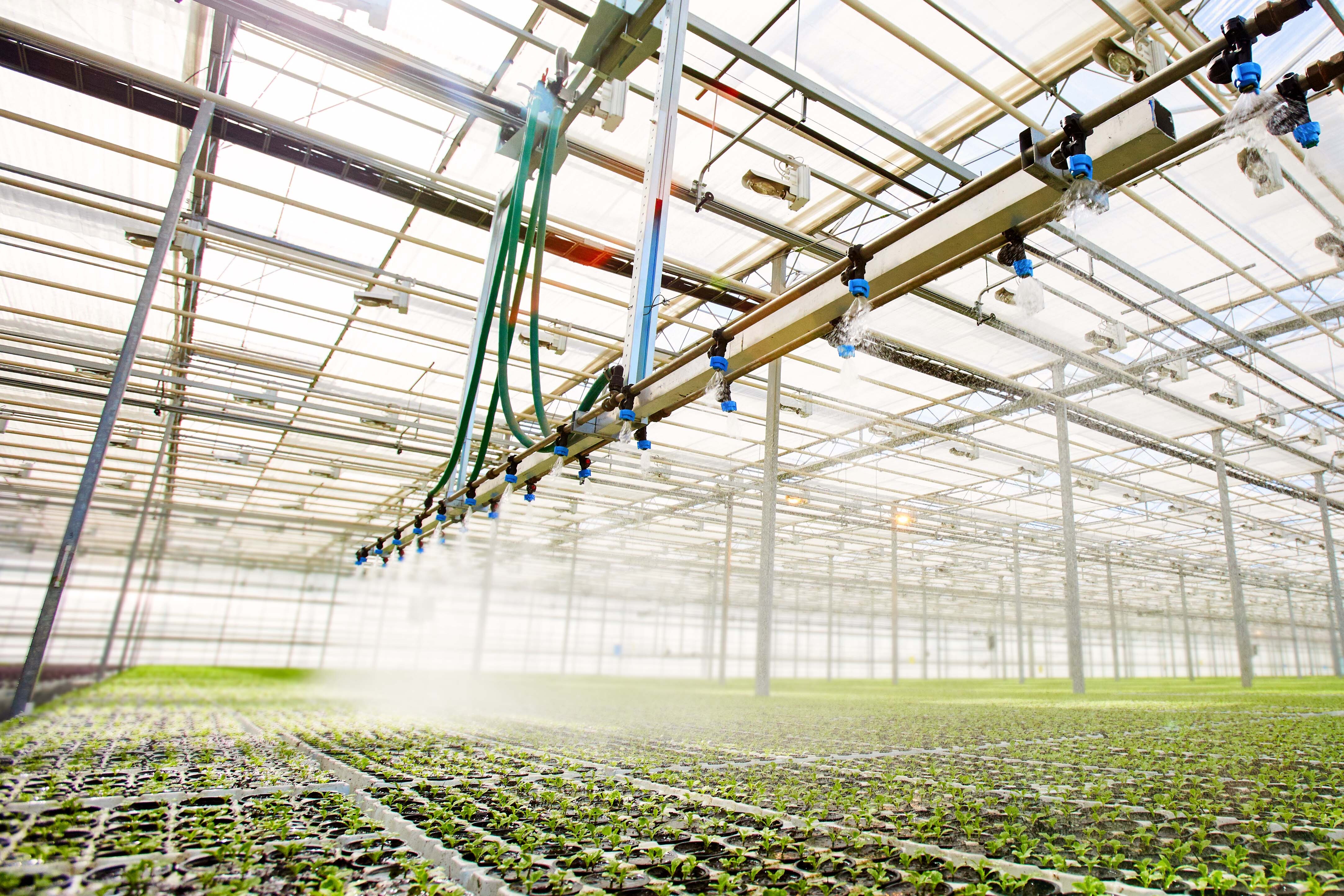
Strategies for reducing fertilizer waste
Applying fertilizer only when needed enables growers to realize savings and reduce their environmental impact. Using the controller also lets growers implement advanced fertigation strategies, such as:
-
Variable rate fertigation uses sensors to monitor the soil nutrient levels and adjust the fertilizer application rate accordingly. Doing so helps ensure plants always receive the optimal amount of nutrients while minimizing fertilizer waste.
-
pH control using the controller to monitor and control irrigation water pH values. This helps ensure nutrients are available in a form that plants can easily absorb.
-
Nutrient injection precisely controls the nutrients dosed directly into the irrigation water, a precise, efficient way to promote plant growth.
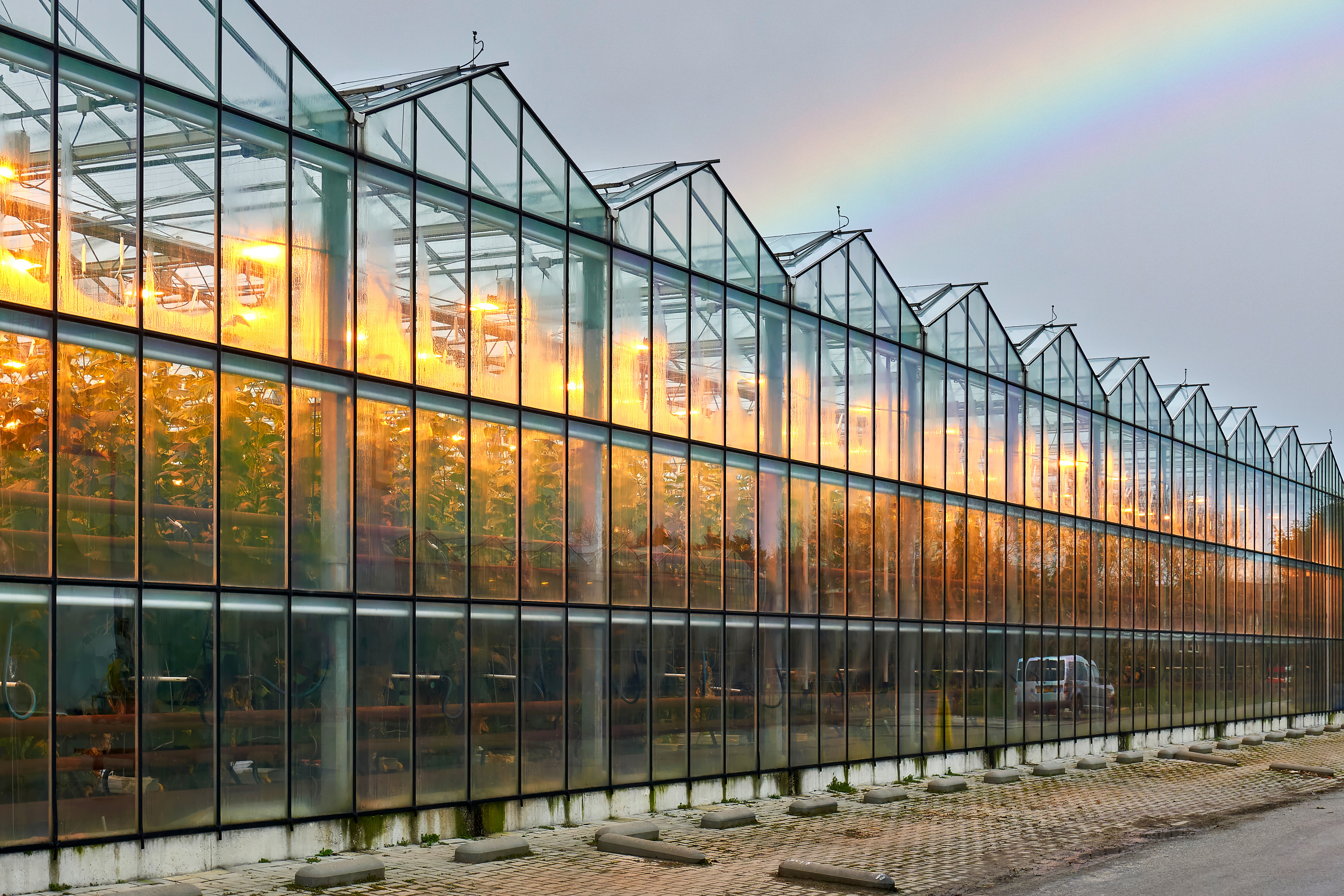
Combining fertigation and climate control
Fertigation and climate control are closely interconnected. For example, greenhouse temperature and humidity can affect the nutrient uptake of plants. Similarly, the nutrient levels in irrigation water can affect a plant’s ability to withstand stress.
By carefully managing fertigation and climate control, growers can optimize the growing environment for their plants. The result? Increased crop yield, improved crop quality and reduced crop losses. Moreover, they can extend the growing season, reduce energy costs and introduce more sustainable practices to their greenhouses.
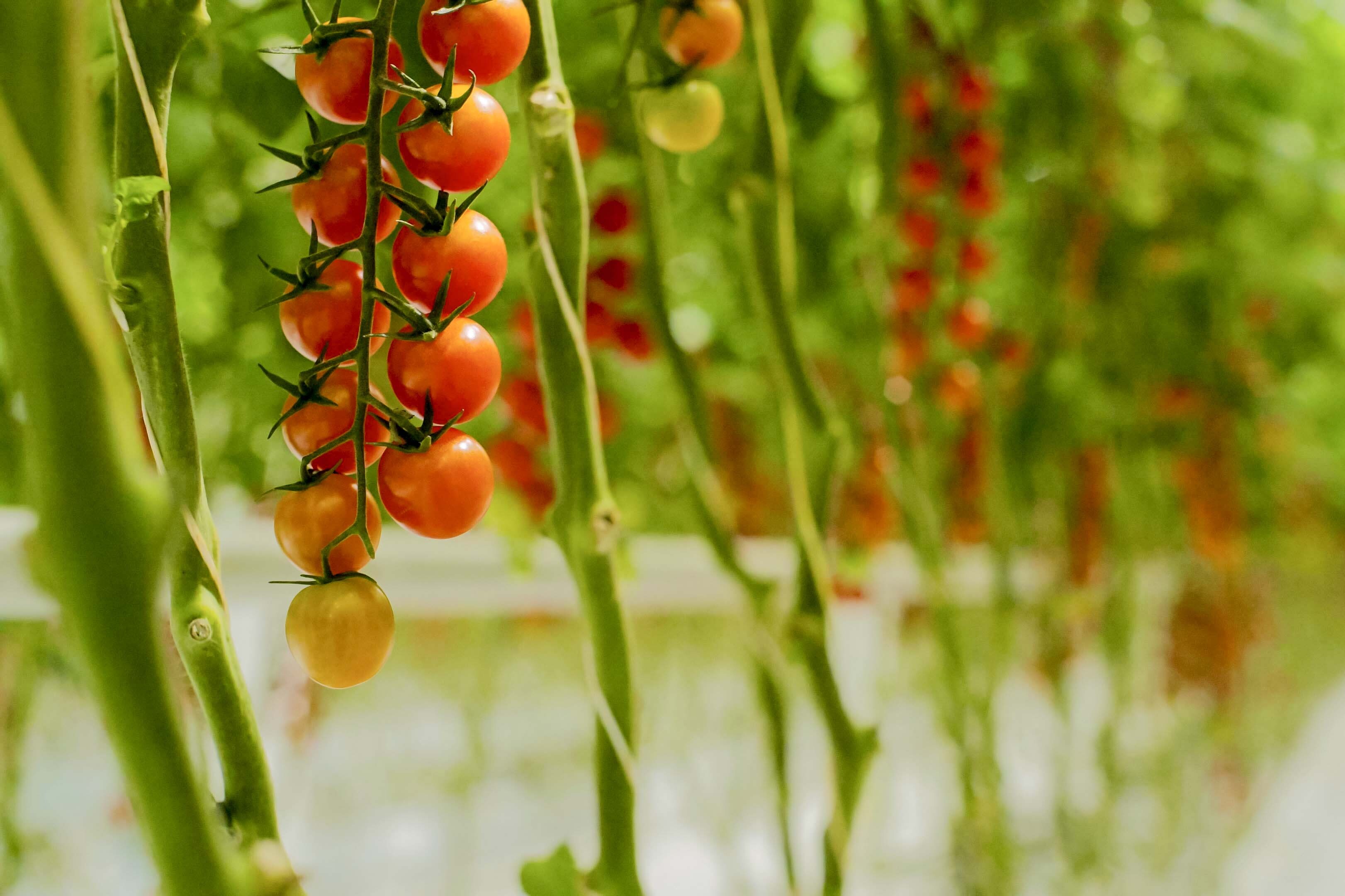
Crop-specific solutions
Fertigation techniques possess the remarkable ability to cater to the distinct nutrient needs of various crops. This adaptability is at the core of successful greenhouse cultivation.
For instance, a leafy greens crop may require a higher nitrogen-to-phosphorus ratio, while flowering plants like roses thrive with elevated potassium levels. A vegetable crop like tomatoes benefits from specific nutrient combinations during its flowering and fruiting stages, leading to plump and flavorful yields. By tailoring the nutrient mixture to the requirements of each crop, plants receive what they need for optimal growth and development.
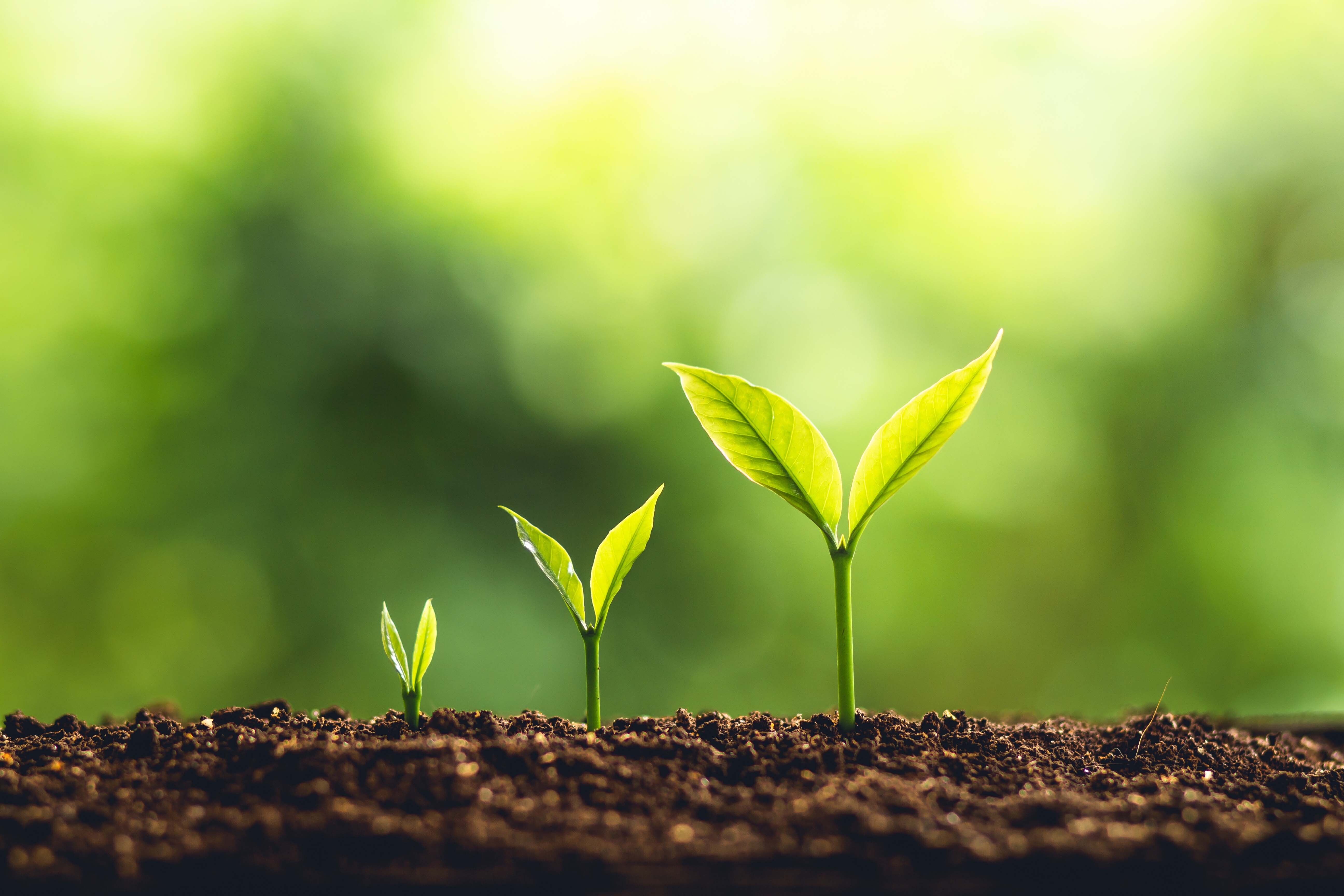
Growth stage considerations
As plants progress through different growth stages, their nutritional demands shift significantly. This prompts the need for nuanced adjustments in nutrient ratios and applications.
During the early stages, plants require a nutrient boost for strong root and shoot development. As they transition to vegetative growth, higher nitrogen ratios fuel lush foliage.
Finally, as they enter the flowering and fruiting stages, a shift towards higher phosphorus and potassium levels supports bloom production and robust fruiting.
Fertigation's responsiveness allows growers to tailor nutrient delivery precisely, aligning with the requirements of each growth phase.
